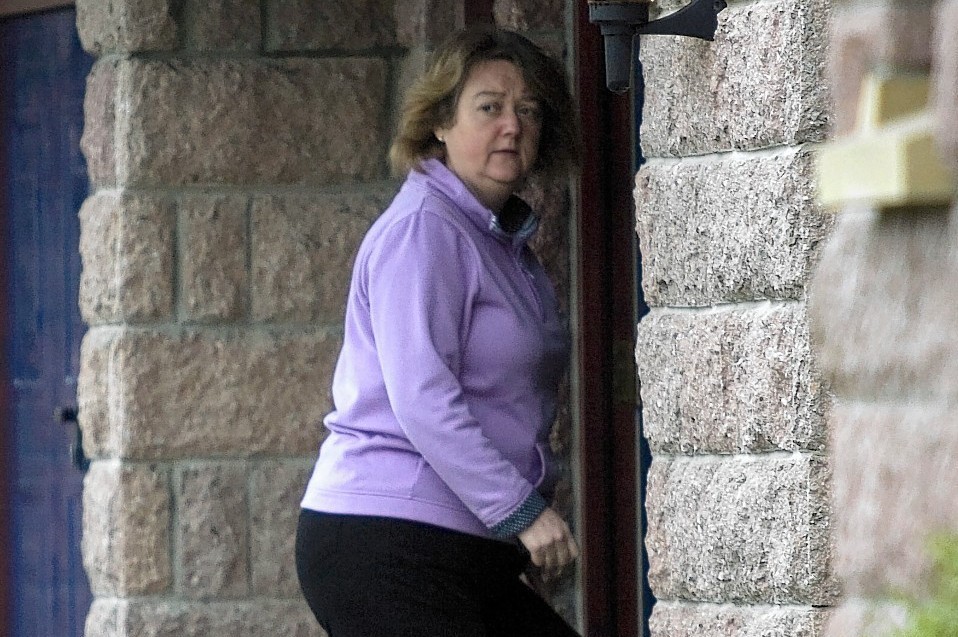Twelve unborn babies needed life-saving cesarean sections after a midwife secretly drugged their mothers, a disciplinary hearing was told.
A total of 20 unborn babies suffered dangerously slow heartbeats as a result of Kirsteen Stewart needlessly administering a labour-inducing drug, according to a lawyer for the Nursing and Midwifery Council (NMC).
Ms Stewart was the primary midwife when the “extremely rare” and unexplained emergencies occurred at a hospital in Aberdeen.
The NMC admitted it had no direct evidence of Ms Stewart giving Syntocinon to the mothers but said its case depended on the “remarkable trend of women who experienced problems” following her involvement.
Bosses at NHS Grampian, who investigated the case, looked at a total of 2,846 births handled by other midwives and found only one similar, inexplicable incident.
Police also investigated Ms Stewart, 48, from Newmachar, Aberdeen, but no criminal proceedings were brought against her.
Ms Stewart was not present or represented when the case against her started at the NMC in Edinburgh on Monday .
The charge reads that between 4 October 2007 and 13 March 2010 at Aberdeen Maternity Hospital she “administered a bolus [intravenous] dose of an oxytocic [labour-inducing] drug to one or more service users”.
It continues: “Your actions caused or contributed to the fetuses of one or more of the service users listed experiencing bradycardia.”
Bradycardia refers to an abnormally low fetal heart rate of less than 100 beats per minute, and can result in distress, jaundice and even death.
Michael Collis, the NMC case presenter, told the hearing: “The NMC cannot provide any direct evidence of the Registrant administering a bolus dose of an oxytocic drug to any of the twenty service users.
“This case instead focuses on the remarkable trend of these cases; unexplained, prolonged, fetal bradycardia following involvement with the Registrant.
“The frequency with which this otherwise rare event has occurred cannot be explained by any other reason than an intervention by the Registrant.”
The opening statement described how colleagues first suspected wrongdoing when two mothers experienced the unexplained bradycardia in 2010.
Three further cases were examined, and it was revealed that Ms Stewart had been the primary midwife in every single instance.
Of the 20 mothers affected, twelve needed “Category 1” cesarean sections – where there is an immediate threat to the life of the women or fetus.
One fetal heartbeat dropped as low as 60bpm – half of the normal rate.
When asked about the frequency of events she had been involved with, the opening statement states that Ms Stewart “did not know what to think, and wondered if it was just bad luck on her part”.
During an independent and internal review of the circumstances, consultant midwife Geraldine Butcher concluded that “cases involving the registrant showed a worrying trend of unexplained, sudden severe fetal bradycardia”.
She also noted that “the majority of these cases…appeared to correlate with an intravenous intervention by the Registrant”.
Tracy Humphrey, a consultant midwife, assisted with the police investigation following the internal review.
Her statement reads: “In my experience, and using the knowledge that I have got, I wouldn’t expect any midwife to encounter the frequency of fetal bradycardias that she encountered in that time frame.”
The police also obtained a witness statement from Dr Alan Mathers, a consultant obstetrician and gynaecologist with the Greater Glasgow and Clyde healthboard.
He concluded: “There is a reason to be suspicious that some voluntary action has led to the fetal bradycardia events”.
During the NHS Grampian investigation, Ms Stewart denied all allegations that were put to her, but offered no explanation as to why she had such a high rate of unexplained fetal bradycardia.
The Crown Office revealed in 2012 that the midwife would not face criminal proceedings.
A spokesman said at the time: “Following an extensive investigation by Grampian Police, and after full and careful consideration of the facts and circumstances of the case, including the available evidence, independent Crown Counsel instructed that there should be no proceedings at this time.
“The Crown reserve the right to proceed in the future should further evidence become available.”
The hearing in front of the NMC panel continues.
